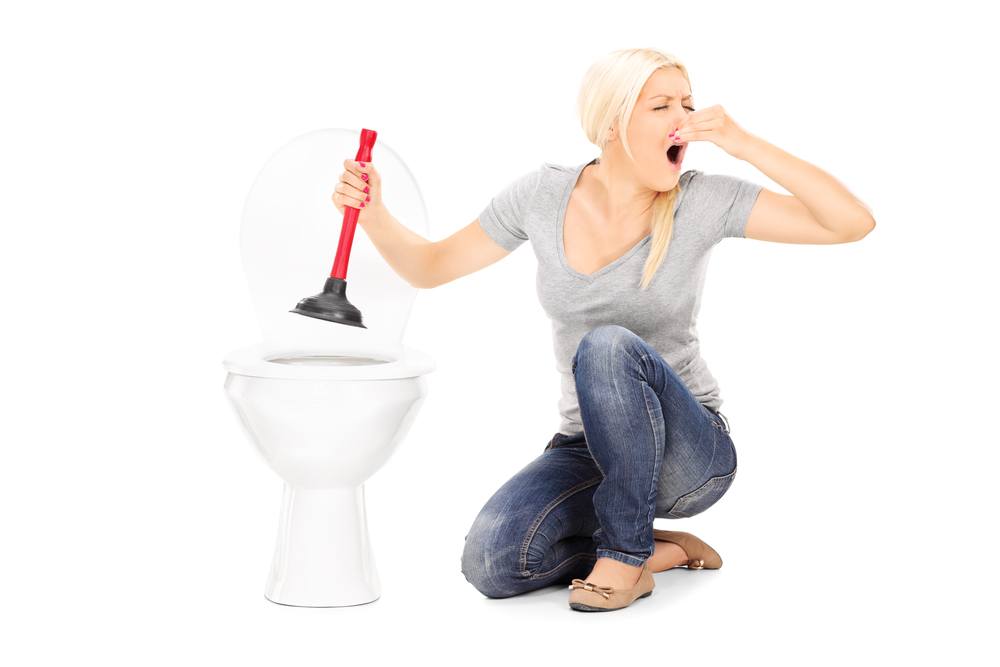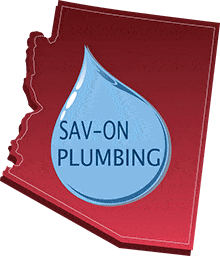
Does your plumbing problem seem too simple for a plumber? Check out these DIY plumbing tips before calling a professional.
It can be hard to decide whether a plumbing problem warrants a call to the plumber. For many people, the instinct to handle at least some plumbing issues is strong. So how can you tell if you should attempt to fix something yourself? The answer depends on a few things:
- Your handiness level
- What tools you have on hand
- How complicated the problem is
Keep reading to learn some pro tips about which plumbing problems you can fix yourself.
A Hard Object Has Plugged the Toilet
Got kids? If so, you may have faced this problem already. If not, your time will come! With a toy or other object preventing the toilet from flushing, a plunger will often dislodge the object. If not, get your shop-vac and try to suction the item out of the pipe. And then wash your hands.
Save Money on Your Water Bill by Tinkering with Your Toilet
We have two simple suggestions for reducing the amount of water your toilet uses. The first uses the power of displacement. Take the lid off the tank and peek inside. Is there some empty space in there? If so, could you fit a brick or medium-sized rock in there without disrupting the moving parts inside? Displacing a little water with a solid object reduces water flow into the tank.
While you have the lid off, look at the chain that connects the flush lever to the flapper. Is there some slack in that chain? If so, adjust the chain a little to remove the slack. There should be a hook on the flush lever. Just disconnect the chain and reconnect the hook a few links up the chain. Be careful – if you make the chain too short, the flapper can’t close and the toilet will run non-stop.
Toilet Runs All the Time
Here’s one more suggestion about toilets. Few things are more annoying than a running toilet. A few different problems can cause a toilet to run. Check the inner components in this order, from easiest to most complicated:
- Look at the tube sticking up toward the top of the tank. This is the overflow tube. Is water running over the top and into the overflow tube? If so, the water level is set too high. Some toilets use a small screw near the top of the overflow tube to set the water level. Adjusting this screw should adjust the water level in the tank. Other toilets use a floater to set the water level. There should be an adjustment screw for the floater as well.
- If the tank isn’t full of water but the water is still running, push down on the flapper at the bottom of the tank. Does the tank start filling up after a few seconds? If so, you will need to replace the flapper. It connects to the overflow tube with two simple hooks. Shut off the water supply by turning off the valve below the tank. Remove the flapper and take it to the hardware store to ensure you buy the right size. Then install the new flapper the reverse way you removed the old one.
- If the water level and the flapper don’t resolve the running water problem, you will need to replace the water valve. These devices are inexpensive, but the process is more complicated than the steps above. If you don’t have any plumbing experience or mechanical skills, we recommend having a professional replace your water valve.
Unclog a Bathtub Drain Using Household Items
There’s nothing like a hot shower or bath to help us wash away stress and fatigue. But what do you do when your drain stops draining? The answer is easier than you think. The first thing to do is get a stiff piece of wire and make a little hook at one end. Pliers will make this job easier. The next step is to create access to your drain pipe. There are several different kinds of drain stoppers out there. Two of the most common types of drain stoppers are stopper levers and drop stoppers.
A stopper lever is a simple lever you pull up to close the drain and push back down to open the drain. If you have a stopper lever, just open the lever and remove the drain screen. Then you can fish around in the drain with your little hook until you pull gobs of hair and goo out of the pipe. Run the water to see if it drains freely. If not, keep poking into the drain and pull out more debris. Replace the drain screen when you’re satisfied.
A drop stopper is a little cap right on the drain pipe. You lift and turn it to open the drain, and turn and drop it to close the drain. If you have a drop stopper, you may need a screwdriver or needle nose pliers to remove the stopper. Try turning the cap counterclockwise until it pops off. Then you can pull the gunk out of the pipe with your little hook. Test your performance by running the water and then replace the cap.
When in Doubt, Ask a Professional to Check It Out
We have just discussed several of the most straightforward plumbing issues you could face. The average person with basic tools can tackle these problems with ease. But many other plumbing problems are too complicated for the layperson. Some situations are true emergencies that call for an expert right away:
- Any time there is a burst pipe or flooding involved, it’s time to call a professional without delay. There is potential for massive property damage from flooding.
- If water and electricity are close to making contact, leave the property and call a pro.
- If something seems to be going on with the pipes under your house, you need to get an expert on the phone.
Phoenix-area residents trust Sav-On Plumbing for their tough plumbing problems. Our clients trust us to be honest and efficient. We will never cut corners by using cheap parts or sub-par techniques. Your family is our family, and that’s why we are so serious about your satisfaction. Reach out to schedule your appointment with Phoenix’s most trusted professional plumbers.
